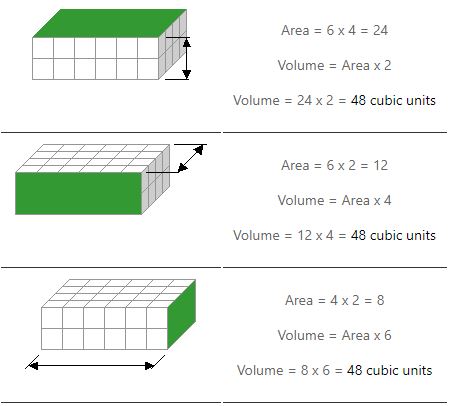

All four sides will slope with an angle of 27°. The bottom of the hole is a rectangle which will have the measurements 15 by 35 meters. Since we can answer the target question with certainty, the combined statements are SUFFICIENTI need some help calculating the volume of a hole. So, the 3 dimensions are 3, 5, and 8, which means the volume of the rectangular solid must be 120. When we plug x=3 into the other two dimensions, we get 15/3 and 24/3 Since the side lengths must be positive, we can be certain that x = 3 Since the area is 40, we know that (15/x)(24/x) = 40 This face has dimensions (15/x) by (24/x) Since the area of each face = (length)(width), we can express the other two dimensions in terms of x.įrom here, we'll focus on the face that has area 40. Let's let x equal the length of one side. So, we know the area of each face (noted in blue on the diagram below). So, there are two opposite faces that each have area 40. Statement 2: Each of two opposite faces of the solid has area 40. Since we cannot answer the target question with certainty, statement 1 is NOT SUFFICIENT Here are two:Ĭase a: the dimensions are 1x15x24, in which case the volume is 360Ĭase b: the dimensions are 3x5x8, in which case the volume is 120 There are several different rectangular solids that meet this condition. Statement 1: Two adjacent faces of the solid have areas 15 and 24, respectively. Target question: What is the volume of a certain rectangular solid? (2) Each of two opposite faces of the solid has area 40. (1) Two adjacent faces of the solid have areas 15 and 24, respectively. (2) Each of two opposite faces of the solid has area 40 -> just gives the are of two opposite faces, so clearly insufficient. (1)+(2) From (1): \(blue=d*h=15\), \(yellow=l*h=24\) and from (2) each of two opposite faces of the solid has area 40, so it must be the red one: \(red=d*l=40\) -> here we have 3 distinct linear equations with 3 unknowns hence we can find the values of each and thus can calculate \(V=l*h*d\). (2) Each of two opposite faces of the solid has area 40 -> just gives the areas of two opposite faces, so clearly insufficient. Two different answer, hence not sufficient.

(1) Two adjacent faces of the solid have areas 15 and 24, respectively -> let the two adjacent faces be blue and yellow faces on the diagram -> \(blue=d*h=15\) and \(yellow=l*h=24\) -> we have 2 equations with 3 unknowns, not sufficient to calculate the value of each or the product of the unknowns (\(V=l*h*d\)). What is the volume of a certain rectangular solid? Volume of rectangular solid is Volume=Length*Height*Depth. I say at max, as for example rectangular solid can be a cube and in this case it'll have all faces equal, also it's possible to have only 2 different areas of the faces, for example when the base is square and the height does not equals to the side of this square.

In a rectangular solid, all angles are right angles, and opposite faces are equal, so rectangular solid can have maximum 3 different areas of its faces, on the diagram: yellow, green and red faces can have different areas. This question is from Official Guide and Official Answer is C.



 0 kommentar(er)
0 kommentar(er)
